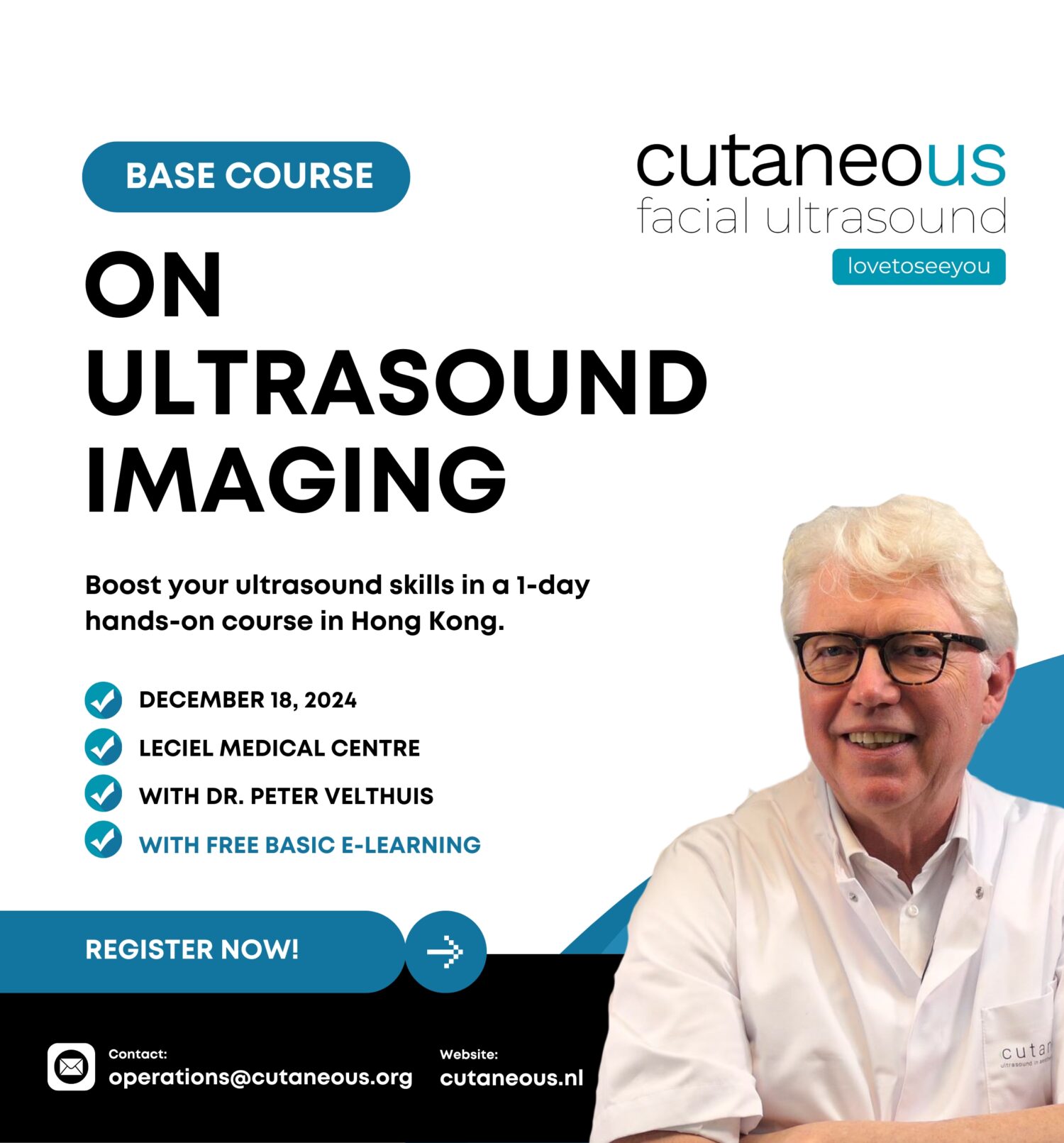
About the Course
The Ultrasound Crash Course for Facial and Musculoskeletal Ultrasonography Evaluation (FUSE & MUSE) provides comprehensive training in both facial and musculoskeletal ultrasound techniques. Beginning with the basics, participants will learn essential ultrasound physics, anatomy, and operation settings to master ultrasound imaging. The course emphasizes the importance of FUSE, covering detailed modules such as forehead, mid-face, and lower-face anatomy, including critical neurovascular bundles, arteries, and potential complications.
The FUSE component delves into specific zones such as the forehead’s glabellar and temporal areas and their associated neurovascular structures, utilizing vein viewers and ultrasound for precision. Mid-face modules highlight vital structures like the zygoma, maxillary zones, nasolabial fold, and nose region, focusing on arteries, nerves, and anatomical layers.
The Lower Face Modules explore facial arteries, mental NVB, and relevant glandular structures, ensuring thorough knowledge of facial neuroanatomy and safe procedural approaches.
In the MUSE section, the course focuses on musculoskeletal evaluation of the trapezius and gastrocsoleus muscles, detailing anatomy, surrounding structures, and specific injection techniques. This ultrasound crash course is tailored to equip practitioners with the skills needed for successful evaluation and intervention in both the facial and musculoskeletal contexts.
Trainer





Course Overview:
1. The basics
1.1 Basic ultrasound physics and anatomy with schematic explanation
1.2 USG setting and operation mastering,
1.3 USG view correlation for anatomy
1.4 The importance of FUSE
FUSE:
2 Forehead module
2.1 Glabellar zone
2.1.1 Supratrochlear NVB
2.1.2 Supraorbital NVB
2.1.3 Glabellar complex
2.2 Temporal zone:
2.2.1 Layers of the temporal zones
2.2.2 Superifical temporal artery,
2.2.3 Deep temporal arteries (anterior and posterior),
2.2.4 Concept of Pitanguy line and implications
2.3 Use of vein viewer and USG
2.4 Complications of insultation to related vascular and neurological structures
3 Mid-face modules
3.1 Zygoma and maxillary zone
3.1.1 Mid-face land tear trough layers
3.1.2 Lip levator msucles
3.1.3 Infra-orbital neurovascular bundle,
3.1.4 Transverse facial artery and veins
3.2 Nasolabial fold
3.2.1 Angular artery
3.2.2 Labial arteries
3.2.3 General idea of distal facial nerves
3.3 Nose region
3.3.1 Infra-trohclear Artery and dorsal nasal artery
3.3.2 Cartilage structures and anatomy
3.3.3 HA and prosthesis in situ
4 Lower Face Modules
4.1 Facial artery
4.2 Mental foreman and NVB
4.3 Hypoglassal nerve and mental nerve
4.4 Submandibular/Parotid gland and neurotoxin
MUSE:
5 Trapezius & Gastrocsoleus muscle
5.1 Anatomy and position
5.2 Important surrounding structure correlation
5.3 Approach of injection

